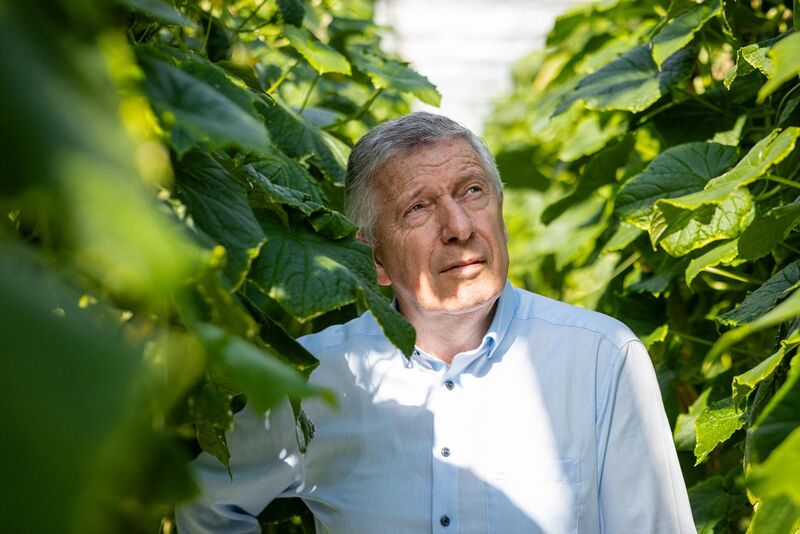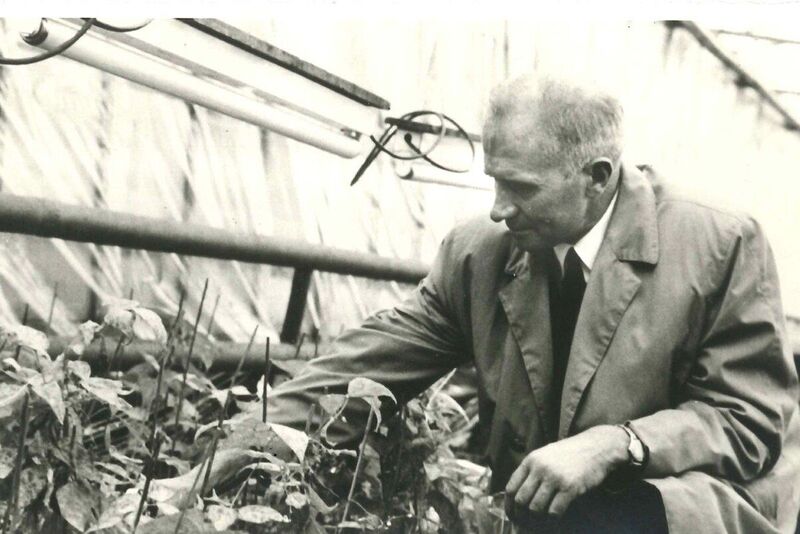It started as a germ of an idea, or rather a little predatory mite in this case. Koppert’s pioneer, Jan Koppert noticed that chemical sprays were ineffective against the mites in his cucumber crop and set out to find a natural solution. One that would last for a very long time…
‘Back in the 60s, my father was a cucumber grower battling with persistent spider mite infestations when he struck on the idea of a natural enemy for this pest,’ Paul Koppert, former CEO and son of Jan Koppert recalls. ‘His journey of exploration took him to research stations in the UK and eventually Switzerland where he found what he was looking for - the predatory mite Phytoseiulus persimilis.’
Back home, he introduced it into his own greenhouse where, after a number of hurdles, the predatory mite began to show promise. ‘My father had given up on chemical agents as their effect had diminished. He was very persistent when it came to the experiments in his cucumber crop and soon neighbour growers and others became curious about what he was doing in his greenhouse. At first they were sceptical, but after repeated introductions of the predatory mite, my father began to show some success.

Jan Koppert led the way
‘The company was set up by my father and my brother Peter in 1967 when they decided to commercialize the first production of predatory mites for the biological control of spider mite,’ says Paul. ‘Koppert was the first to offer a biological solution in the market, and years later, we are still rearing this incredibly useful mite, Phytoseiulus persimilis, and many other predatory mites.
Professionalized production
‘When my father passed away, my brother Peter started running Koppert as a commercial venture. I joined them in 1972, and my cousin Henri Oosthoek in 1977. From the start, we used an integrated pest management system that included compatible chemical pesticides and it became necessary to give growers quite a bit of technical advice. In this way, we became consultants as well as producers – something we still do to this very day.’
‘A few things worked in our favour during the years. Pests were increasingly resistant to chemical agents, so growers were actively seeking alternative solutions for pests and diseases. At the same time, supermarkets imposed higher requirements for stricter control of chemical residues on fruit and vegetables. This forced growers to look for safe solutions, and we were more than ready to help them.’

A perfect location to start
Operating from the largest vegetable and flower cultivation area in the Netherlands, the Westland offered the company a ready market – almost 10,000 hectares of horticulture that specialized in greenhouse grown tomatoes, cucumbers, bell peppers and a range of flowers.
‘We had a great location and hundreds of growers to serve on our doorstep. As our IPM programmes became more and more successful, we decided to make our biological solutions available to everyone. Our R&D department was set up and production systems professionalized. A growing demand for our products soon meant that we needed to establish subsidiaries and production units around the world.’
Continuous innovation
‘Predatory mites are a very important product group at Koppert. They continue to play a pivotal role in integrated pest management strategies. Now that the third Koppert generation is running the company, they are more committed to finding innovative biological solutions for growers than ever!’
I’m proud of the total company we have created and of the people who work here. We do it together. To innovate, to bring something new to the market, that’s in our genes. The commitment to finding solutions for growers – it was our driving force in the past, still is today, and will be in the future,’ Paul Koppert concludes.
